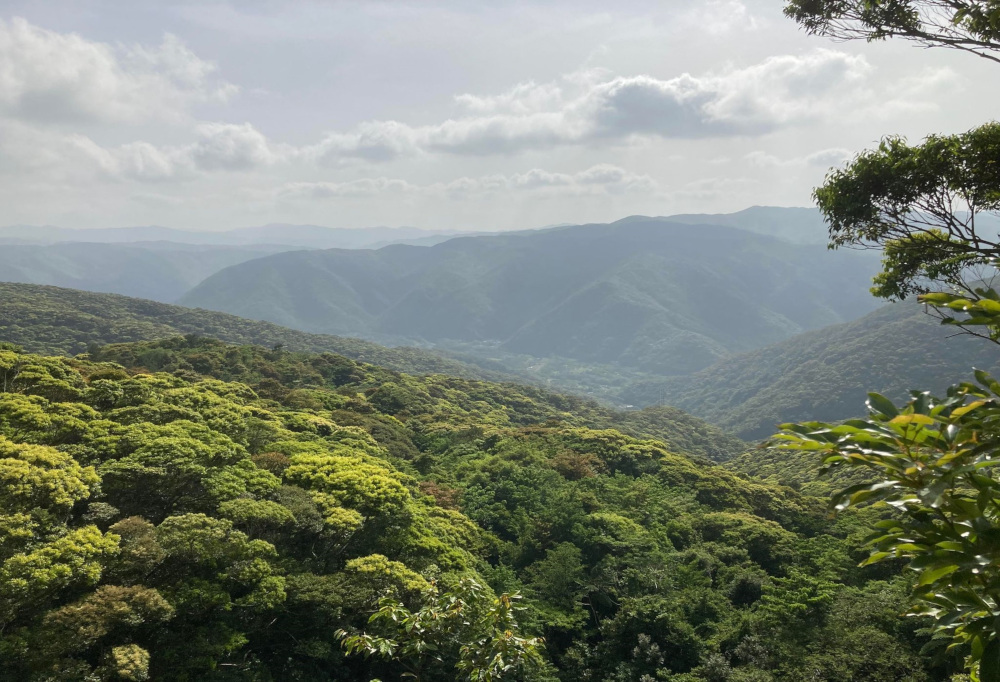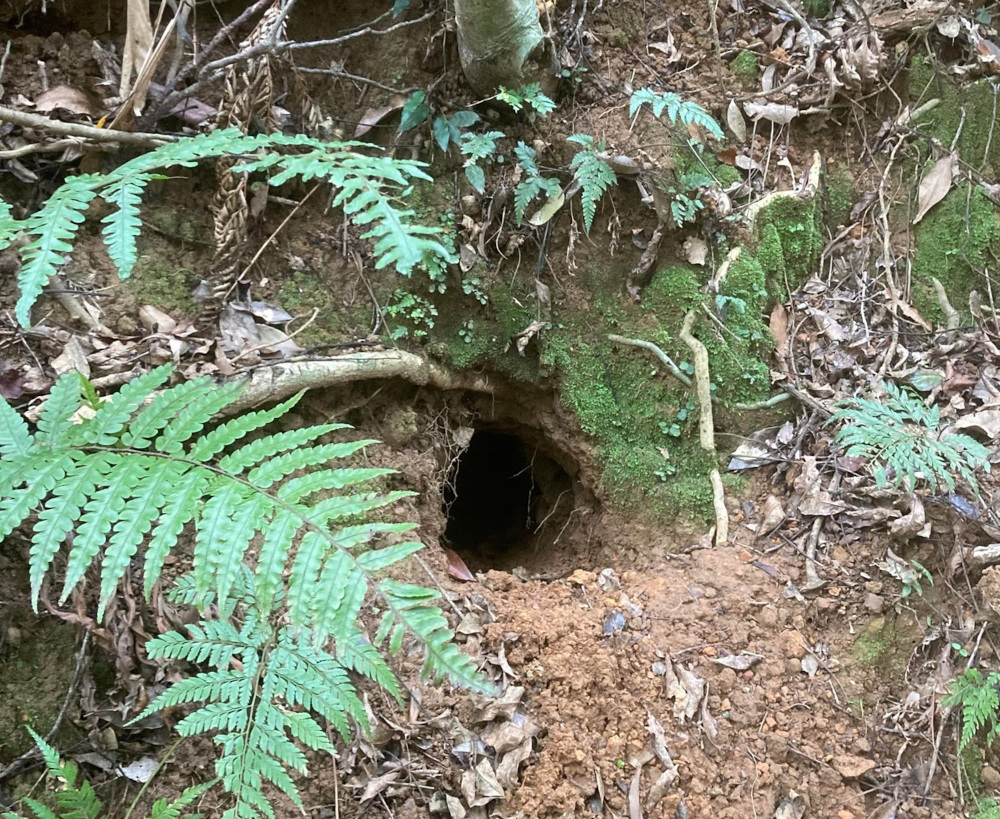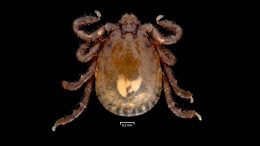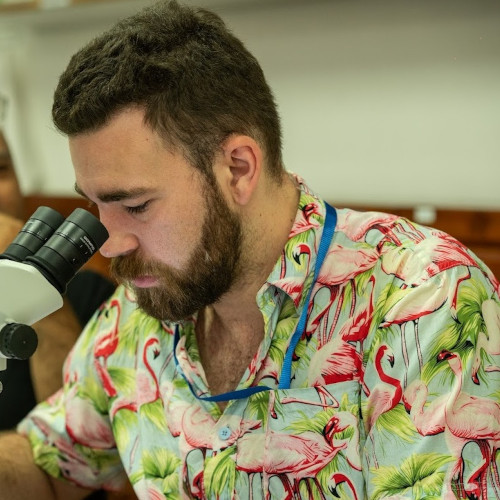In the southern reaches of Japan lies the lush, subtropical island of Amamioshima — Japan’s garden of Eden. Although almost unknown to the larger world, Amamioshima is the country’s ecological crown jewel, with some of its richest biodiversity. The island is blanketed in native forest and skirted by vibrant coral reefs.

Unsurprisingly Amamioshima is also home to scores of endemic species, including perhaps its most famous resident, the Amami rabbit (Pentalagus furnessi). This bizarre mammal, sometimes called a “living fossil,” is about the size of a miniature schnauzer and covered in a woolly black fur with such minute ears some people fail to recognize it as a rabbit when they first see it. Amami rabbits are a keystone species in the island’s warm, wet forests, regulating plant communities through their grazing, dispersing seeds, and even providing the dung relied on by several endemic dung beetles.
View this post on Instagram
They’re also host to one of the world’s rarest parasites, the endangered Ryukyu rabbit tick (Haemaphysalis pentalagi).
The rabbit tick is unique to the island of Amamioshima, where it coevolved with the Amami rabbit — the two species spend most of their lives in close association. The life of a Ryukyu tick begins when it hatches from an egg deep in a rabbit’s burrow. The young tick quickly locates the resident rabbit, who will become its home, transportation, and constant companion. Although ticks feed on the blood of rabbits, this appears to have no adverse impacts on the host animals and may even serve to enhance their health by keeping their immune system primed.

Although ticks are known for their role in disease (e.g., Lyme, spotted fever, tick-borne encephalitis), Ryukyu rabbit ticks never bite humans and seem to be content in their association with the rabbits.
Unfortunately, the once peaceful island life enjoyed by the Ryukyu rabbit tick and Amami rabbit has been disrupted by human activity. In the 1970s the Japanese government introduced the small Indian mongoose (Urva auropunctata) to Amamioshima in a poorly planned effort to control venomous snakes. The mongooses, who reproduced rapidly, had little interest in snakes and instead preyed upon Amami rabbits, resulting in massive declines.
There’s good news: A 30-year campaign to eradicate the invasive mongoose was finally declared a success in 2024, providing a reprieve to the Ryukyu rabbit tick and Amami rabbit.
Tragically, feral dogs and cats still stalk the island’s forests, killing Amami rabbits and representing a major threat to both rabbit and tick — and wildlife diseases like toxoplasmosis also threaten the pair. To make matters worse, the invasive big-headed ant (Pheidole megacephala) has also been introduced to the island. This voracious invader is known to decimate communities of small invertebrates, including ticks. As they spread, they may also cause Ryukyu rabbit tick populations to decline.
Amidst these threats the world’s first conservation program for a globally threatened parasite was launched to save the Ryukyu rabbit tick in 2022. The Mohamed bin Zayed Species Conservation Fund and Japanese Ministry of Environment provided support to a small team led by researchers from Hokkaido university, who partnered with rangers on Amamioshima to begin conserving this endangered species.
Hardly anything was known about the Ryukyu rabbit tick, but within the first year the team developed monitoring methods to track wild populations and understand the trajectory of the species. An ongoing monitoring program is now in place to track the tick indefinitely and assess the impacts of conservation actions and invasive species.
Some wild ticks were collected and transported back to Hokkaido University, where they were used to start a captive-breeding program. It didn’t take long before they were reproducing successfully in captivity, and now a third generation of captive-bred Ryukyu rabbit ticks has recently been welcomed into the world.
Many people have a burning question have after hearing about the Ryukyu rabbit tick: Why should we save parasites?
At a foundational level, some argue that all species hold intrinsic value, including parasites.
A more compelling argument can be made, though: Parasites play unseen but often important roles in ecosystems, where they serve to support and stabilize entire biological communities.
Parasites even provide direct benefits to humans. In the case of the Ryukyu rabbit tick, scientists are studying its saliva with hopes of develop new pharmaceuticals to treat auto-immune diseases. Researchers are also developing the tick as a model organism (like the fruit fly and lab rabbit) to aid in their efforts to answer fundamental scientific questions and develop new technologies.
Although small, the Ryukyu rabbit tick is making a big impact on the world of conservation biology as a flagship species — a symbol that even parasites are worth saving from extinction. By conserving this rare animal, we take the first steps on the road toward a holistic new conservation, free from the old “species chauvinism” that focuses almost exclusively on larger, more charismatic animals.
On top of that, protecting the Ryukyu rabbit tick will help to safeguard its ecosystem — and may safeguard our health, too. That’s a big role for a tiny invertebrate.

Previously in The Revelator:
Parasite Lost: Did Our Taste for Seafood Just Cause an Extinction?


